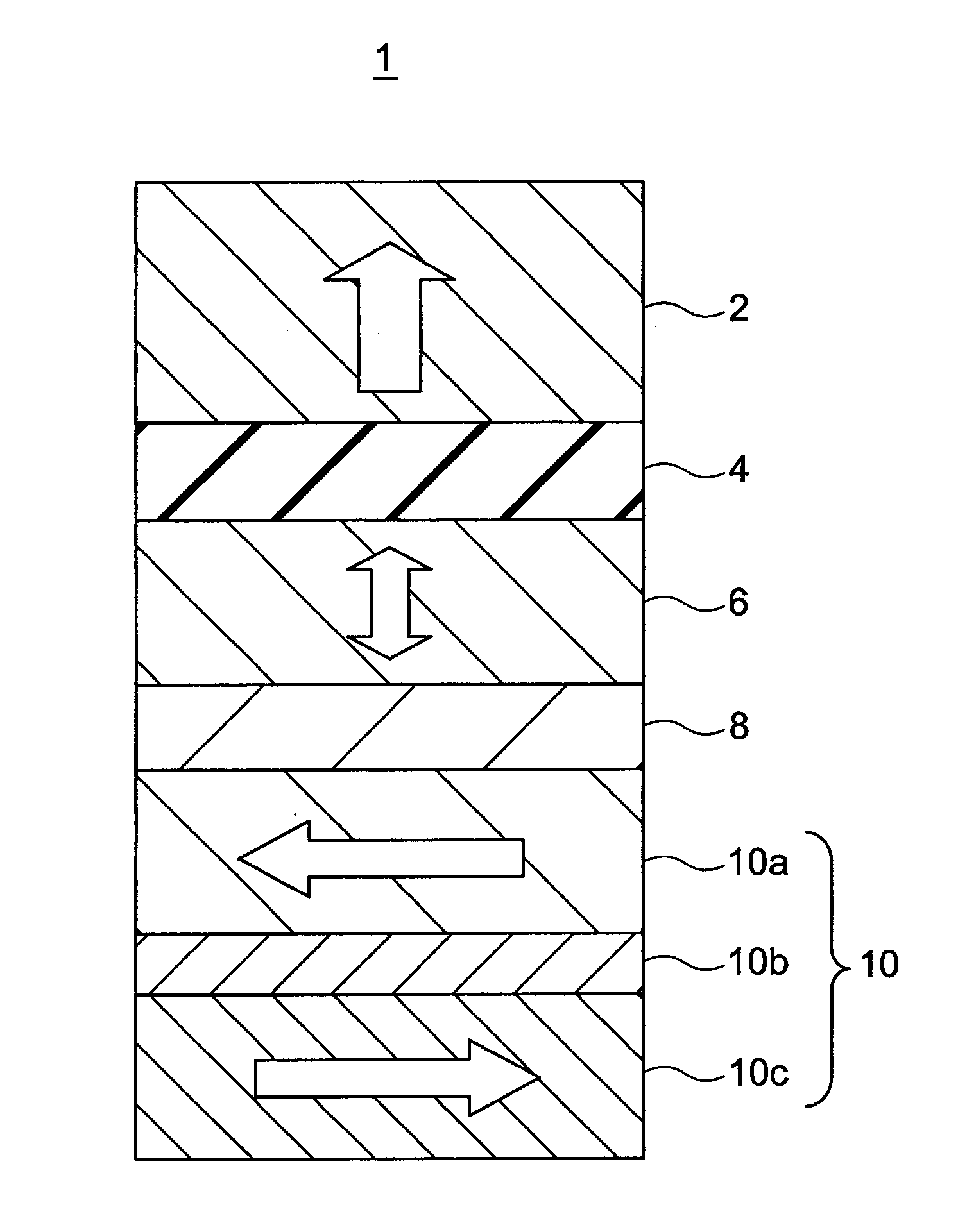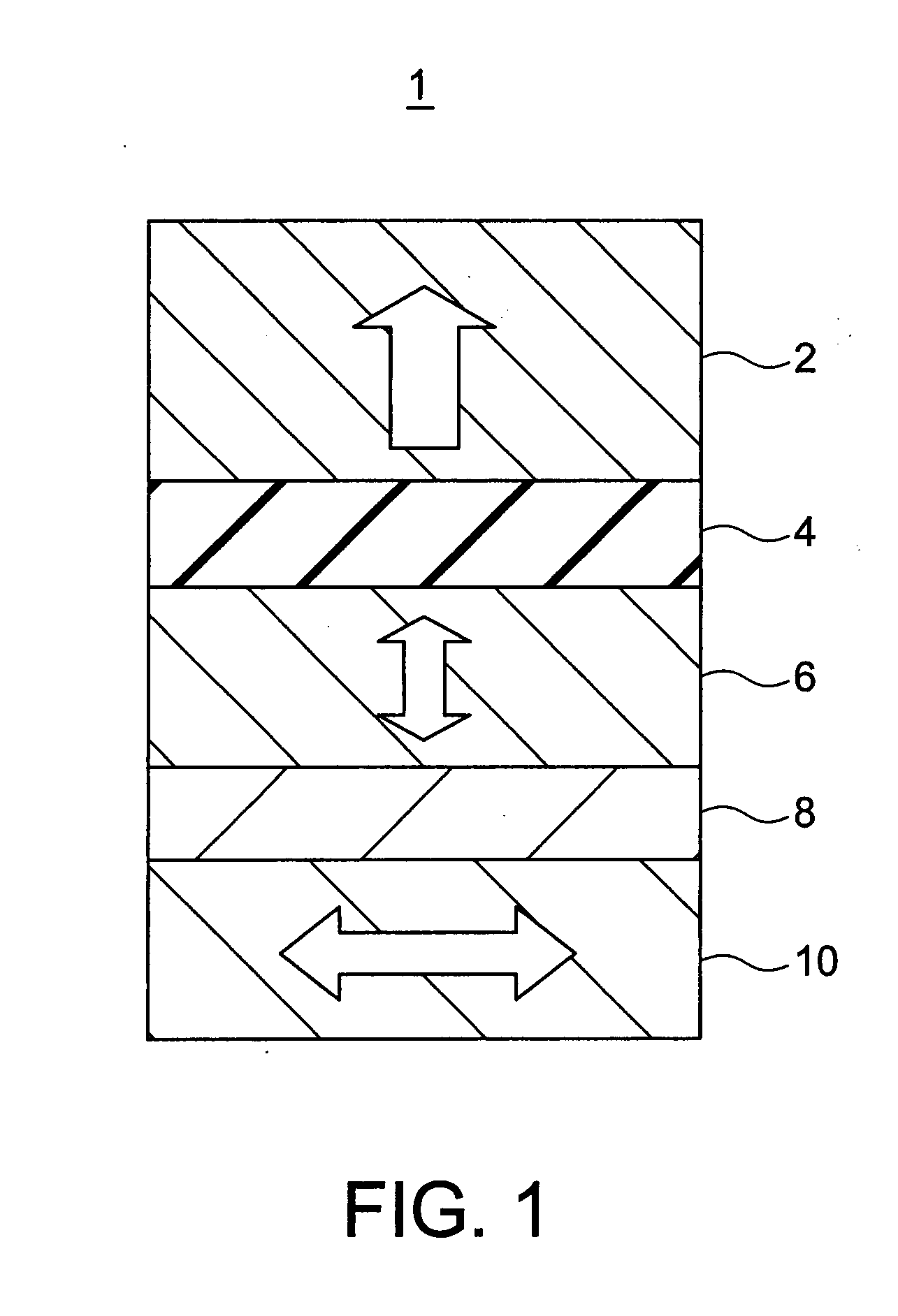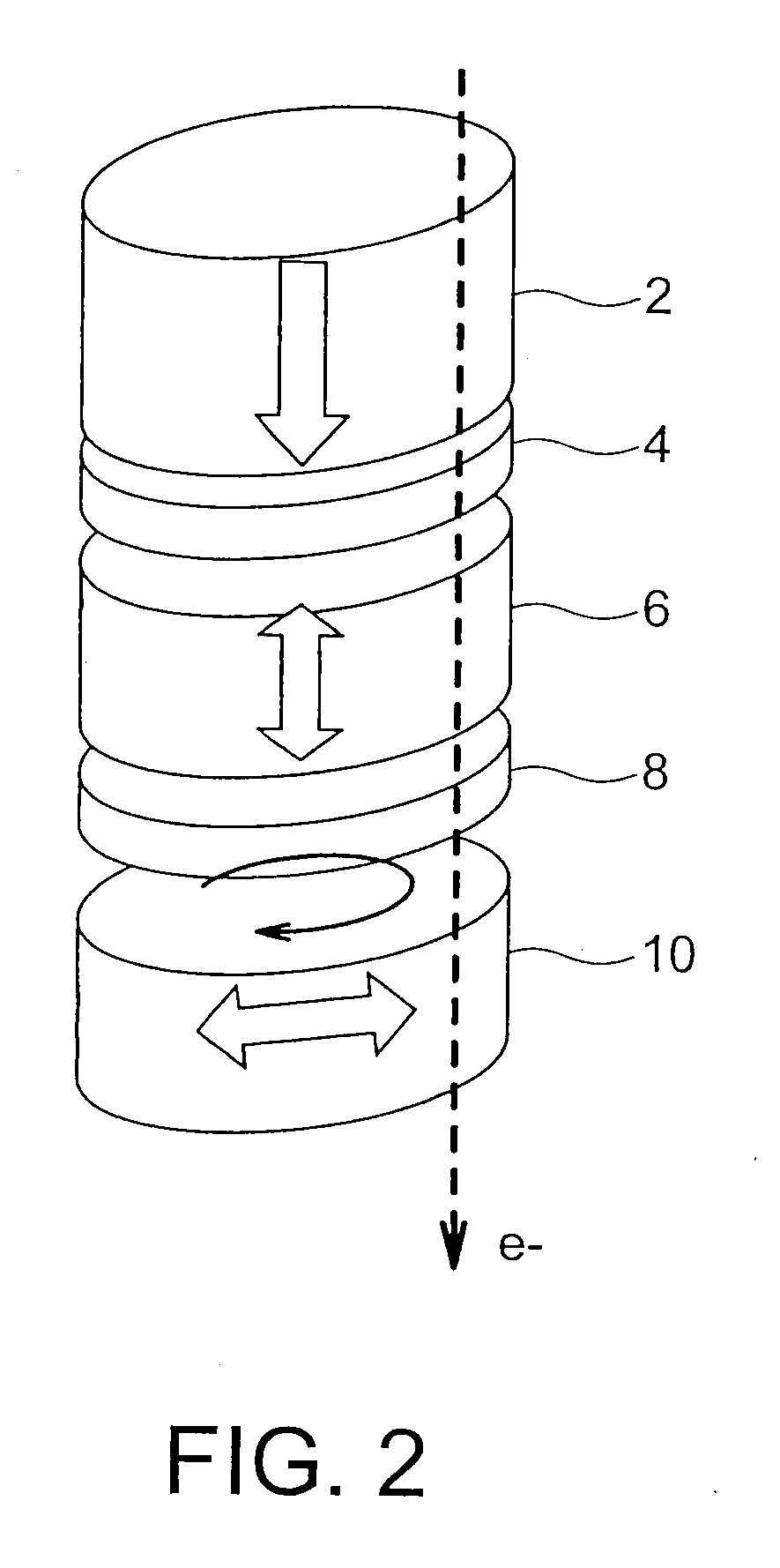Magnetoresistance effect element and magnetic random access memory
a technology of magnetic random access memory and magnetic effect, which is applied in the direction of digital storage, semiconductor devices, instruments, etc., can solve the problems of insufficient write current amount, difficulty in achieving large memory capacity, and increased current amount required for writing, etc., to achieve high-speed writing, reduce current required for writing, and achieve large capacity
- Summary
- Abstract
- Description
- Claims
- Application Information
AI Technical Summary
Benefits of technology
Problems solved by technology
Method used
Image
Examples
first embodiment
[0023]FIG. 1 shows a magnetoresistance effect element in accordance with a first embodiment 1 of the present invention. The magnetoresistance effect element of this embodiment includes an invariable magnetization layer (reference magnetization layer) 2, a tunnel barrier layer 4, a magnetic recording layer 6, a spacer layer 8, and a magnetization oscillating layer 10. The invariable magnetization layer 2 includes a ferromagnetic layer having a magnetization direction that is substantially perpendicular to the film plane and is invariable before and after application of a current to the magnetoresistance effect element 1. The tunnel barrier layer 4 is formed with an oxide containing an element selected from the group of Mg, Al, Ti, Hf, and the likes, from which a desired magnetoresistance effect variation can be obtained by tunneling electrons. More specifically, magnesium oxide, aluminum oxide, or the like can be used as the tunnel barrier layer 4. The magnetic recording layer 6 incl...
second embodiment
[0036]FIG. 8 shows a magnetoresistance effect element in accordance with a second embodiment of the present invention. The magnetoresistance effect element 1 of this embodiment is the same as the magnetoresistance effect element 1 of the first embodiment shown in FIG. 1, except that the magnetization oscillating layer 10 has a stacked structure of ferromagnetic layers 10a and 10c that are ferromagnetically coupled and have a nonmagnetic layer 10b interposed in between, instead of a single-layer ferromagnetic layer having a magnetization direction parallel to the film plane. The magnetization direction of each of the ferromagnetic layers 10a and 10c are parallel to the film plane.
[0037]If the magnetic material having magnetization parallel to the film plane is formed in a circular shape, a square shape, or a square-like shape having each corner rounded in a magnetization oscillating layer formed with a single-layer ferromagnetic film, a reflux domain structure might be formed. The re...
third embodiment
[0039]FIG. 9 shows a magnetoresistance effect element in accordance with a third embodiment of the present invention. The magnetoresistance effect element 1 of this embodiment differs from the magnetoresistance effect element 1 of the first embodiment shown in FIG. 1, in that the magnetic recording layer 6 is replaced with a stacked structure of an ordered alloy layer 6a or an alloy layer 6a and an alloy layer 6b. The ordered alloy layer 6a has a L10 crystalline structure containing at least one element selected from the group of Fe, Co, and Ni, and at least one element selected from the group of Pt and Pd. The alloy layer 6a is formed with an alloy having a hexagonal crystalline structure containing at least one element selected from the group of Fe, Co, and Ni, and at least one element selected from the group of Cr, Ta, Pt, and Pd, and has magnetic anisotropy in a direction substantially perpendicular to the film plane. The alloy layer 6b contains at least one element selected fro...
PUM
 Login to View More
Login to View More Abstract
Description
Claims
Application Information
 Login to View More
Login to View More - R&D
- Intellectual Property
- Life Sciences
- Materials
- Tech Scout
- Unparalleled Data Quality
- Higher Quality Content
- 60% Fewer Hallucinations
Browse by: Latest US Patents, China's latest patents, Technical Efficacy Thesaurus, Application Domain, Technology Topic, Popular Technical Reports.
© 2025 PatSnap. All rights reserved.Legal|Privacy policy|Modern Slavery Act Transparency Statement|Sitemap|About US| Contact US: help@patsnap.com



